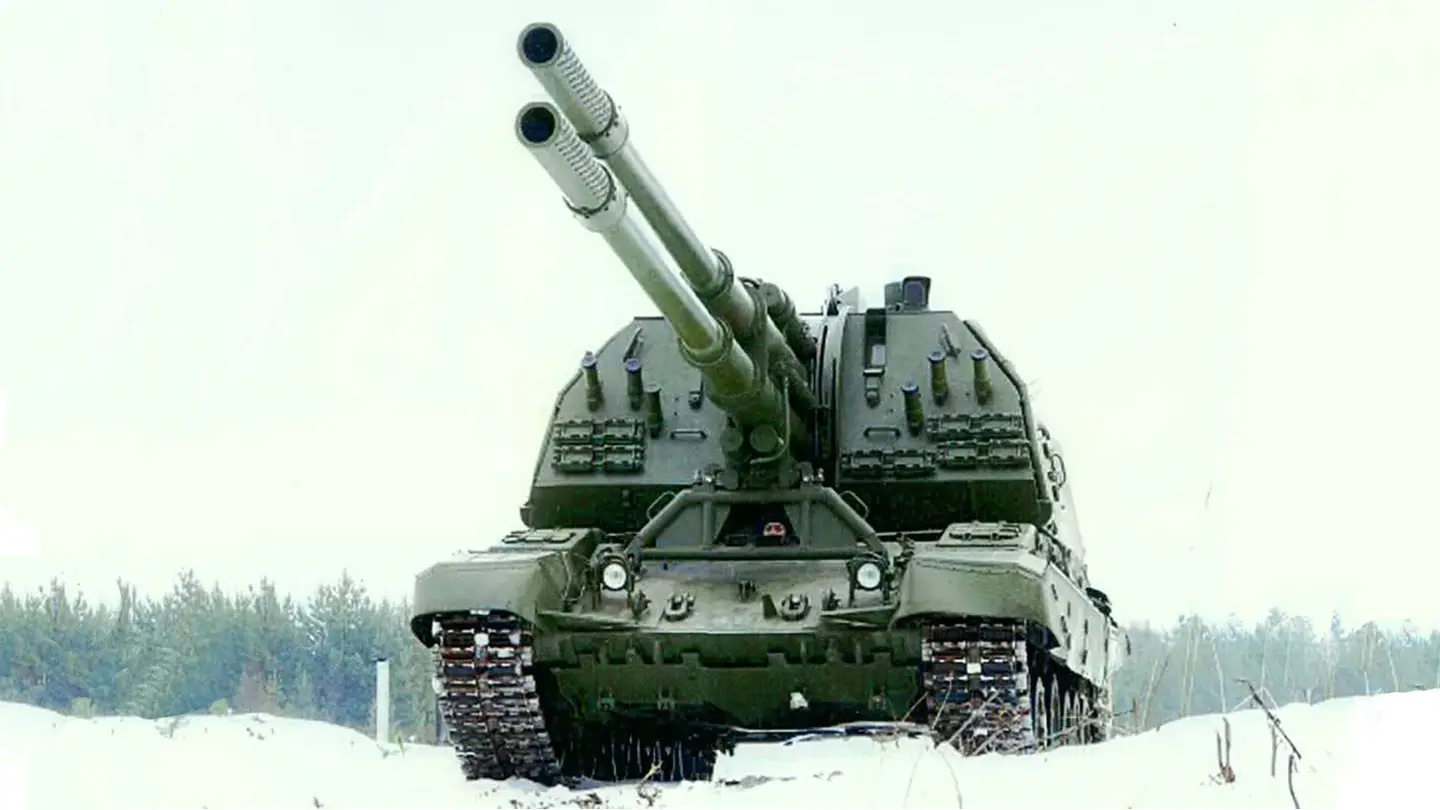Es conocida la importancia que para el Ejército de Rusia han tenido y tienen aún, los sistemas de armas de artillería terrestre, tanto de tubo como los cohetes y misiles. El desarrollo de un Sistema de Artillería Autopropulsado (SPH) a orugas, capaz de operar dos armas de tubo de 152 mm instalados en la misma plataforma y torreta, es un proyecto que esa fuerza lleva adelante desde hace décadas. El sistema denominado 2S35 Koalitsiya-SV estuvo en desarrollo hasta el 2010, inicialmente instalado sobre la plataforma del tanque T-80. Diversos problemas técnicos, motivaron su suspensión en esa fecha. Pero la guerra con Ucrania con casi dos años en curso, ha dado un nuevo impulso a éste ambicioso programa, de un arma con un poder de fuego devastador. Existen prototipos instalados sobre la plataforma del moderno tanque T-14 Armata, con carga automática independiente en ambos tubos, 10 disparos /min de cadencia y un alcance de 70 km empleando proyectiles RAP (Rocket Assisted Projectile). Extraoficialmente se menciona que algunos sistemas estarían siendo “testeados”en el campo de batalla.
As Moscow announces plans to deploy its 2S35 Koalitsiya-SV self-propelled gun to Ukraine, it’s worth recalling the rather more bizarre, double-barreled configuration of that same weapon, that was eventually rejected by the Russian Ministry of Defense.
The name used by Russia’s latest self-propelled gun harkens back to the original double-barreled version, also the 2S35 Koalitsiya-SV, meaning ‘coalition’ in Russian — a reference to the paired main guns.
The initial 2S35 Koalitsiya-SV prototypes were developed from the 2S19 Msta-S self-propelled gun, which was based on the chassis of the T-80 tank and introduced to Soviet service in 1989. The new gun took the chassis and automotive components of the Msta-S and combined them with an all-new turret. There were at least two of the double-barreled prototypes completed, one of them featuring a distinctly faceted turret rear and a slightly different main gun arrangement, as seen in the video below:
Twin-barrel guns of different kinds appear to have been of particular interest to Soviet and later Russian weapons designers, with a variety of double-barrel naval artillery installations, as well as different kinds of anti-aircraft artillery and even aircraft guns.
Instead of the single 152mm howitzer that armed the Msta-S, the original Koalitsiya-SV featured a pair of guns of the same caliber, arranged like the barrels of an ‘over-under’ shotgun. This added a lot of weight and complexity, including separate auto-loaders to feed ammunition to each gun. This, in turn, made the double-barrel Koalitsiya-SV notably expensive.
However, the benefit was a higher rate of fire, reportedly achieving 16 rounds per minute, compared to between six and eight rounds per minute for the Msta-S.
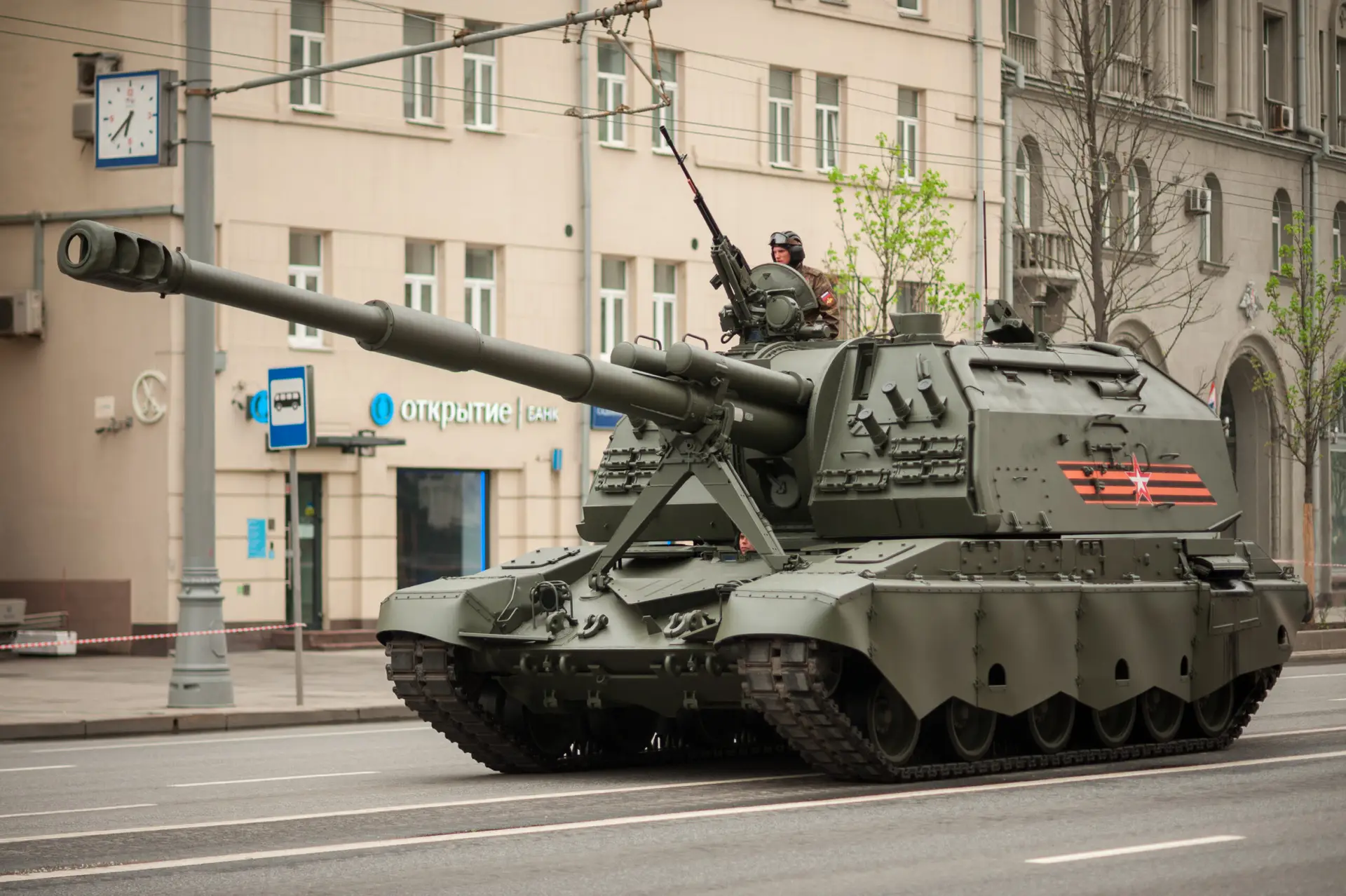
As well as its prodigious rate of fire, the Koalitsiya-SV’s double barrels ensured an improved first-hit capability, while a second barrel provided a built-in ‘spare’ should the other fail, something that’s hardly uncommon during prolonged use. The twin guns had the advantage of being able to fire two rounds very quickly, with those rounds arriving in quick succession with no barrel position change needed. The system also had the reported ability to very rapidly fire multiple rounds at the same target with each projectile arriving at the same time, on a different trajectory — a concept known as multiple round simultaneous impact (MRSI). While even towed larger caliber artillery pieces can achieve these effects, the Koalitsiya-SV could put more rounds in the air quicker, allowing for a single system to lay down remarkable destruction on a single target at the same instant.
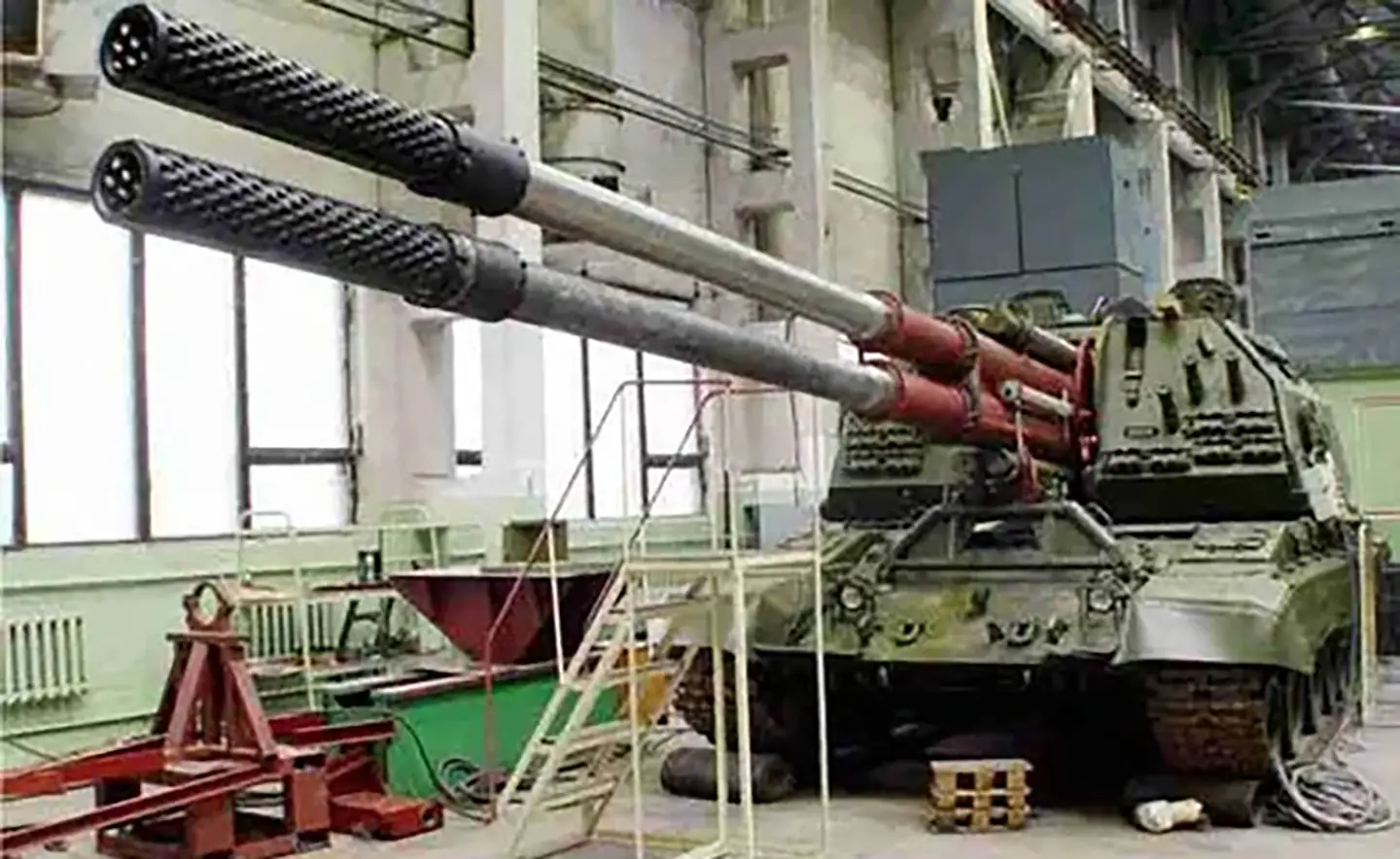
Stowed in the turret, a total of 70 ready-to-use projectiles were reportedly provided for the main guns. A fire-control system allowed different ammunition types to be selected, including long-range guided projectiles for greater accuracy.
The turret, which offered 360 degrees of traverse, was intended to be unmanned, with the driver and a firing team of two (some sources suggest it could be operated by just one gunner) sitting at the front of the hull. The vehicle was powered by a diesel engine at the rear of the hull.
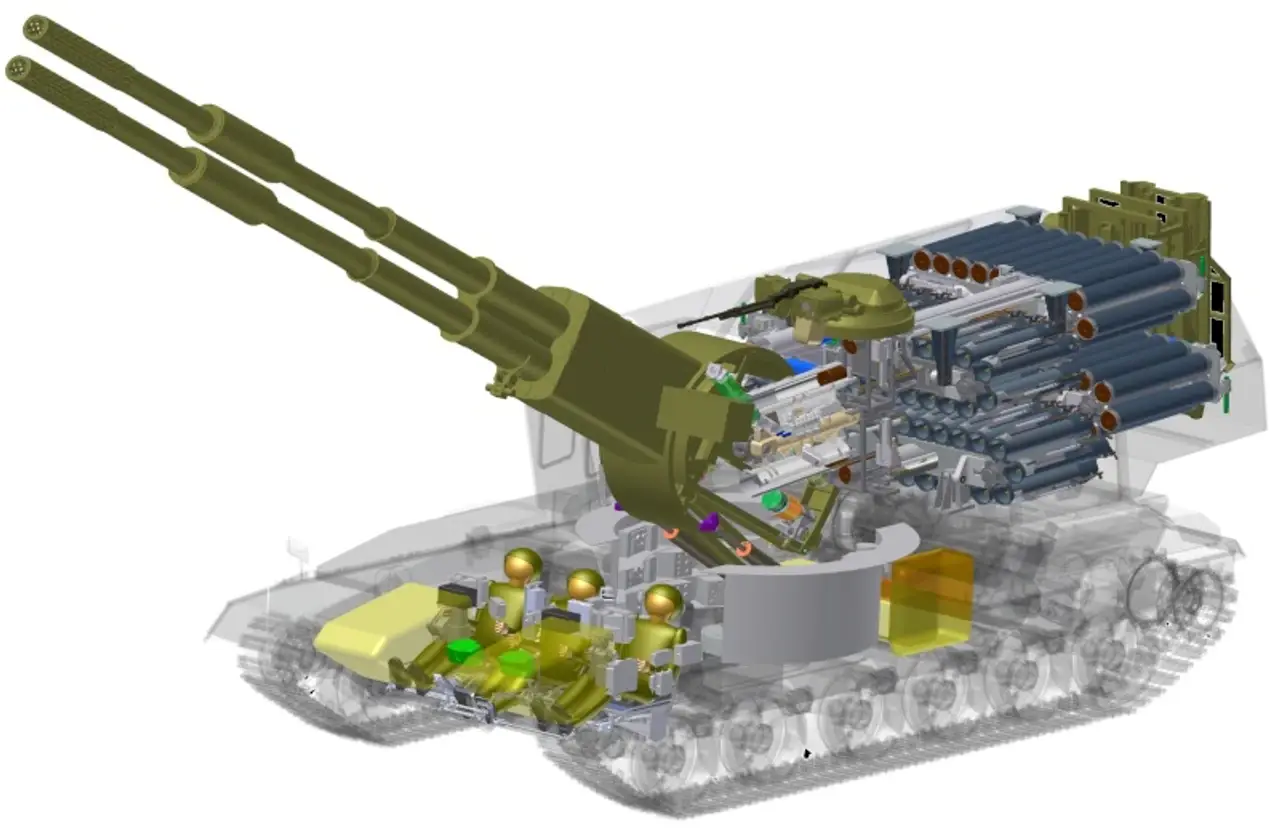
For defensive purposes, the original Koalitsiya-SV was fitted with launchers for smoke grenades and there was provision for an anti-aircraft heavy machine gun; a 7.62mm machine gun would have likely been fitted coaxially with the main armament.
As well as the tracked version, an 8×8 wheeled development of the double-barrel Koalitsiya-SV was also apparently projected, as well as a naval version to arm warships, but it’s unclear if either of these was ever realized. Subsequently, a single-barrel version of the Koalitsiya-SV has been tested on a truck chassis, as seen below, as part of a growing trend toward wheeled self-propelled guns.
Likely driven by concerns about cost and complexity, the development of the double-barreled version of the Koalitsiya-SV appears to have been abandoned in or around 2010.
In its place, the revised Koalitsiya-SV appeared in May 2015, when it took part in the Moscow Victory Day Parade, alongside other new armored vehicles, among them the T-14 Armata tank, Kurganets-25 tracked infantry fighting vehicle, and the Bumerang 8×8 armored personnel carrier.
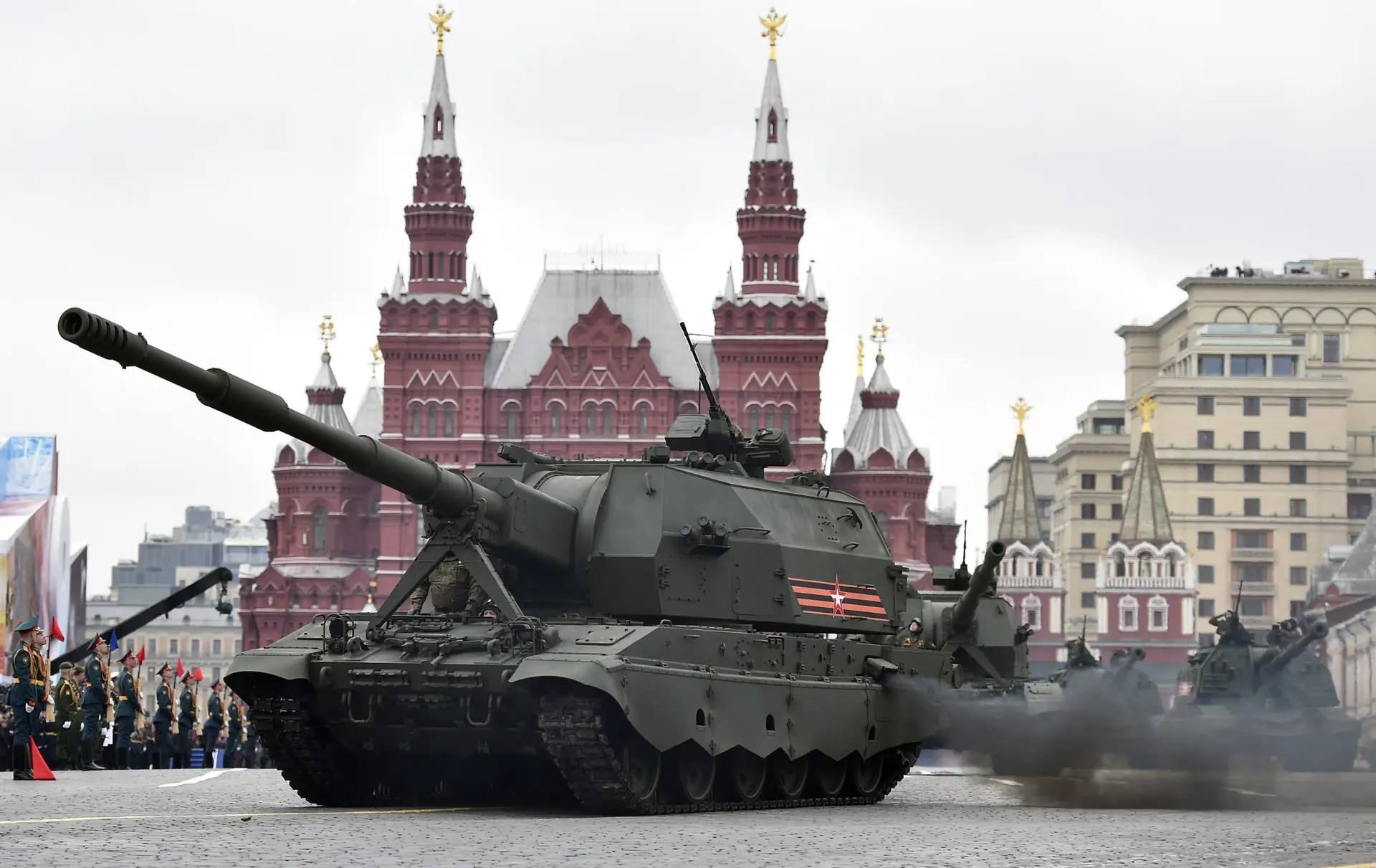
Aside from its single-barrel gun, the new-look Koalitsiya-SV is based on a T-90-type drivetrain, while the hull and crew positions have similarities with the Armata. This marks a further departure from the 2S19 Msta-S that it’s ultimately intended to replace.
The development of the single-barrel Koalitsiya-SV has been subject to delays, with deliveries originally projected for 2016.
As of April 2023, however, the self-propelled gun was still undergoing state trials, these being completed in October, paving the way for mass production to begin.
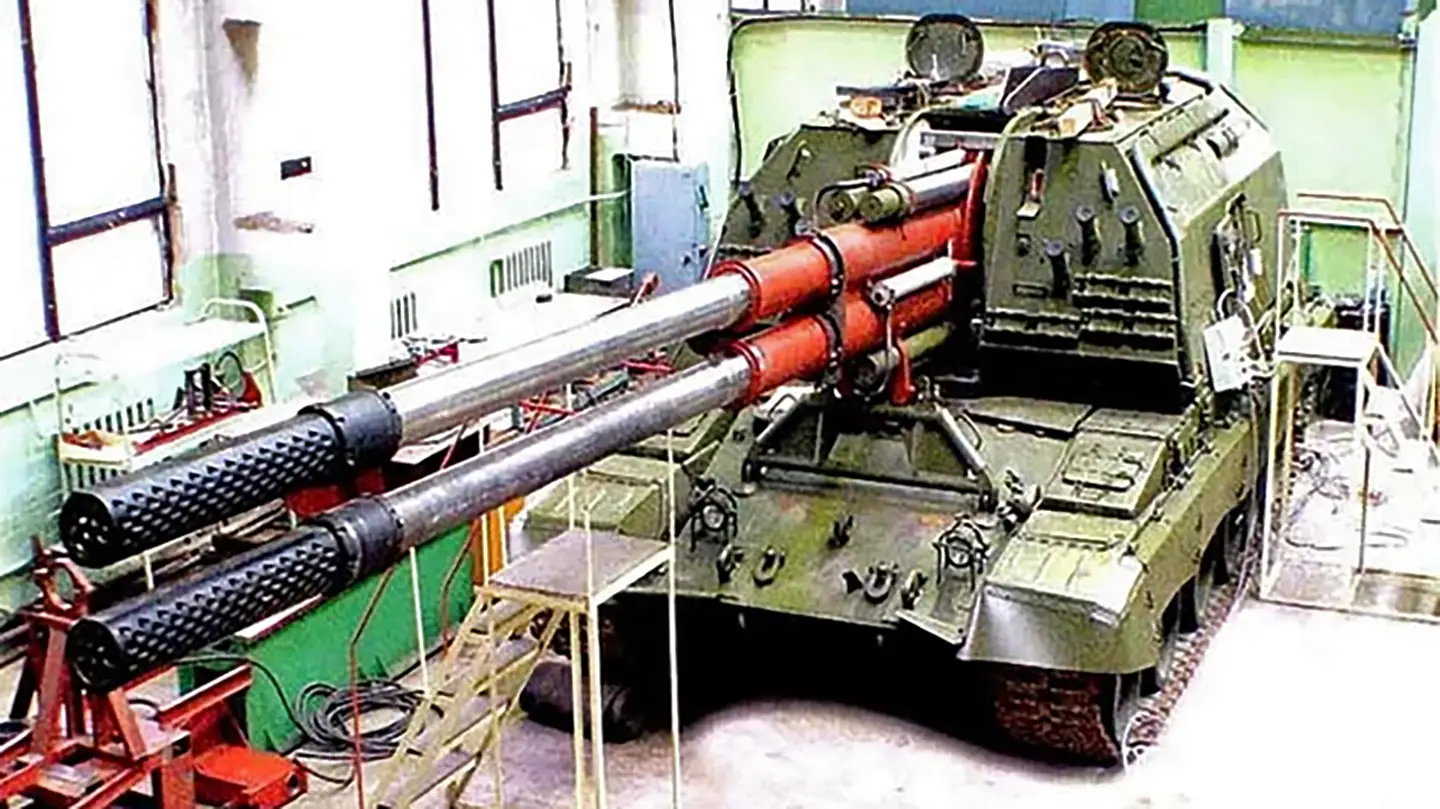
It’s unclear exactly how many examples of the Koalitsiya-SV the Russian Army has now received, but it’s now poised to go into combat in Ukraine — if it’s not there already.
Sergei Chemezov, the head of the Rostec state defense conglomerate told Russia’s state-run RIA news agency today that a first pilot batch of the self-propelled guns will be delivered before the end of this year.
“I think they will appear there [on the battlefield in Ukraine] soon since howitzers of this class are needed to provide an advantage over Western artillery models in terms of firing range,” Chemezov said.
This follows a report from Russia’s state-run TASS news agency that a single example of the 2S35 Koalitsiya-SV has already been deployed to the front line in Ukraine, perhaps as part of experimental trials.
According to TASS, the 2A88 howitzer of the Koalitsiya-SV can fire at a rate of “more than 10 rounds per minute,” out to a range of 44 miles, when using rocket-assisted projectiles. While the rate of fire is significantly less than that claimed for the double-barrel version, it comfortably exceeds that of the 2S19 Msta-S. The older self-propelled gun can fire a standard round to around 15 miles, increasing to 22 miles when using rocket-assisted projectiles.
Clearly, the Russian military has an insatiable appetite for artillery support in its war in Ukraine and losses have been significant. The Msta-S, among other heavy artillery pieces, has been a priority target for Ukraine, being struck by counter-battery fire from M142 High Mobility Artillery Rocket Systems, or HIMARS, on multiple occasions.
With only a handful of Koalitsiya-SVs available at this point, it’s unlikely that they will make a significant impact in the short term, although their success in Ukraine could well accelerate the replacement of the Msta-S, as well as other older systems. At the same time, we have seen how sanctions, in particular, have affected Russia’s ability to produce certain heavy weapons on a significant scale, especially when they feature high-technology components sourced from other countries. The Koalitsiya-SV may well not be immune from that, too.
As it stands, the 2S35 Koalitsiya-SV that’s headed to Ukraine will be a fairly conventional system, at least compared to its radical double-barrel forebears.
Fuente: https://www.thedrive.com

